Historical-Artistic Analysis by Dr. Chiara Voltarel
From the lively and elegant Piazza of Montebelluna, the scent of linden trees leads you along a tree-lined avenue that gently rises toward the hill of the ancient market and the former parish church of Santa Maria in Colle—a complex overlooking the town, once its religious, administrative, and commercial centre. The territory holds precious evidence of much older settlements, traceable to the Paleovenetian period.

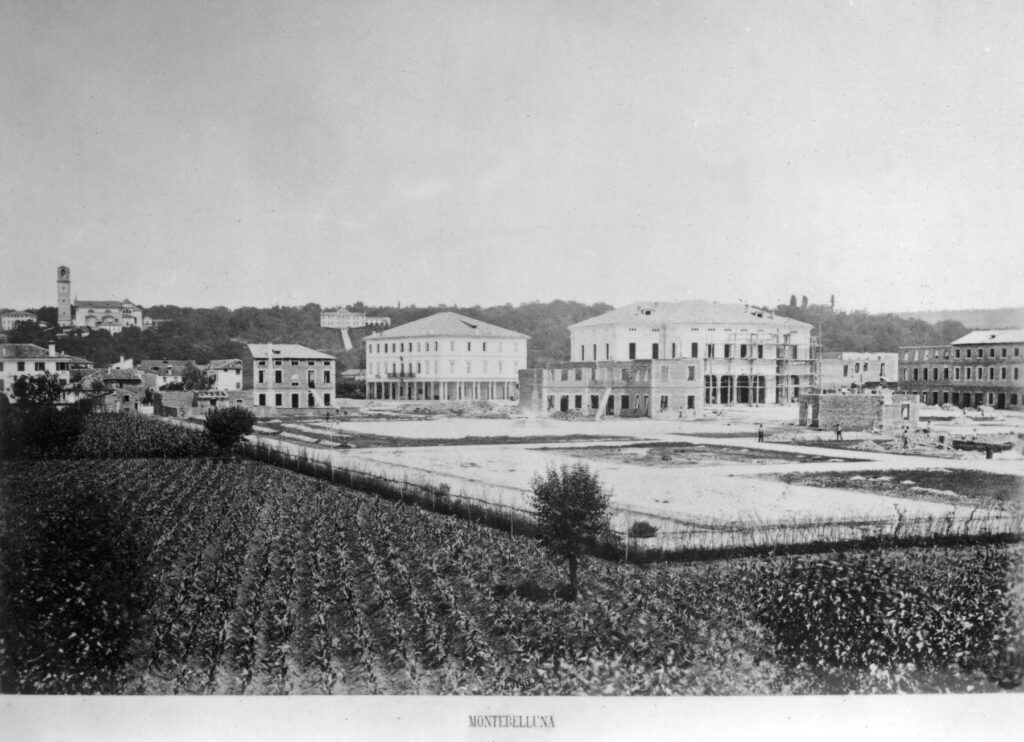
Until the end of the 18th century, the hill remained a particularly vital place, hosting the centuries-old town market.
However, with the decline of trade and the arrival of modernity, the area gradually became less accessible. In the second half of the 19th century, there arose the need to move the market to the lower part of the town, and toward the end of the century, an ambitious urban planning project by Engineer Giobatta Dall’Armi took shape: with a new street grid, the modern Montebelluna was born.
Around the turn of the 20th century, there followed a period of great growth: the population increased by 80%, the entrepreneurial and bourgeois class in trade and services developed, ever more eager to distinguish themselves and, when possible, to display prestige, giving a new face to palaces and residential villas built along the new traffic axes.1.
¹ Lucio De Bortoli, Montebelluna and the market, Origins and construction of a city, Danilo Zanetti Editore, Montebelluna 2006.
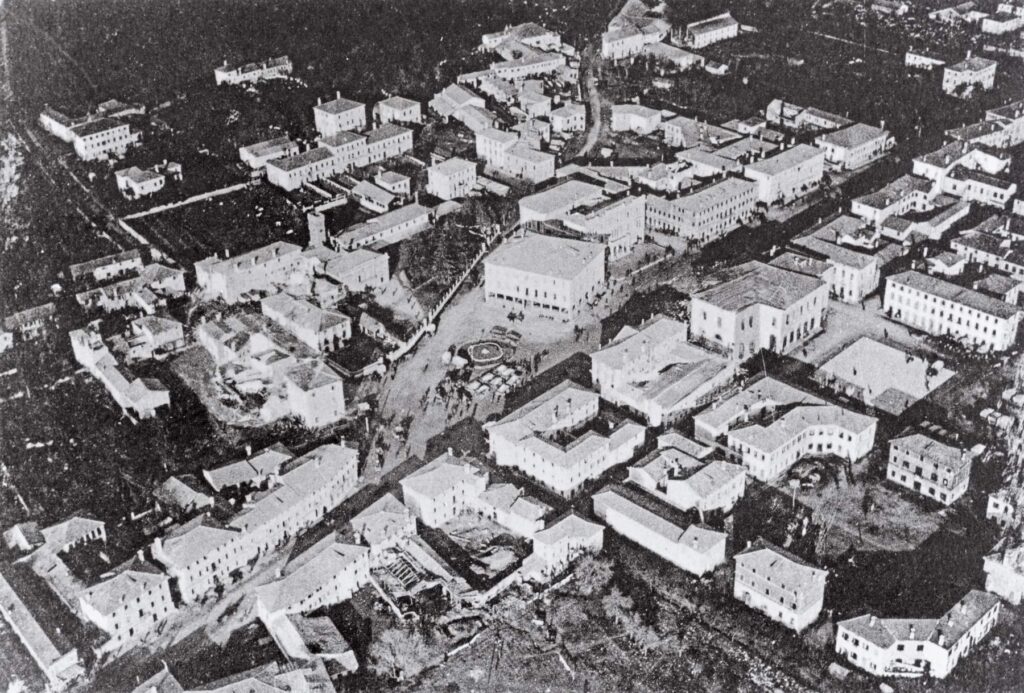
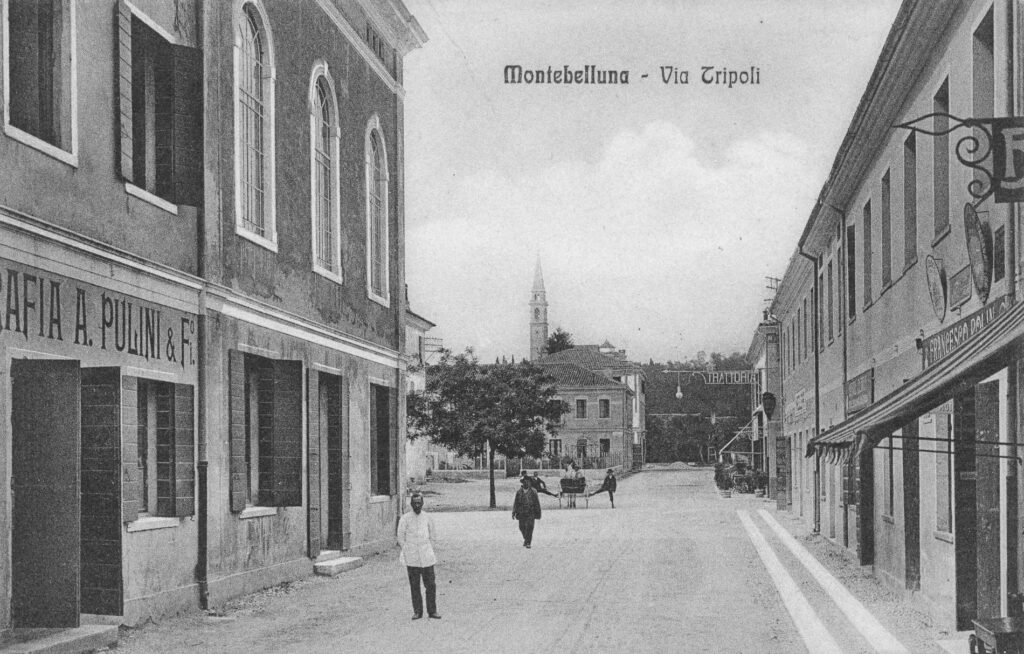
Via Tripoli, which would later become Viale della Vittoria, was extended until it met Via della Chiesa which, by forming an obtuse triangle with Viale Matteotti, defines one of the town’s most beautiful and evocative areas, a “garden city” neighbourhood that progressively became enriched with notable and precious architectures inspired by Art Nouveau/Liberty style.2.
² Lucio De Bortoli, Montebelluna in the Early Twentieth Century. Private buildings in original drawings and archival papers.,
Biblioteca Comunale di Montebelluna, Montebelluna 2007; Lucio De Bortoli, Montebelluna profilo storico, Danilo Zanetti Editore, Montebelluna 2024, p. 318.
In the years after World War I, many construction sites opened in the green area of the new Viale della Vittoria: in 1922 work began on the Cinema Teatro Eden, a symbol of growing modernity and of life resuming after the tragic wartime events. The avenue set out to become one of Montebelluna’s most beautiful.
Among the contributors to the new civic decor is surveyor and lieutenant Attilio De Campo. In the 1920s, he is often mentioned in the practices of Montebelluna’s Building Commission. His activity was intense though concentrated in just a few years, culminating in the project for his own residence, submitted to the Commission in 1925.
³ Lucio De Bortoli, Montebelluna historical profile, Danilo Zane1 Publisher, Montebelluna 2024, pp. 85-156.
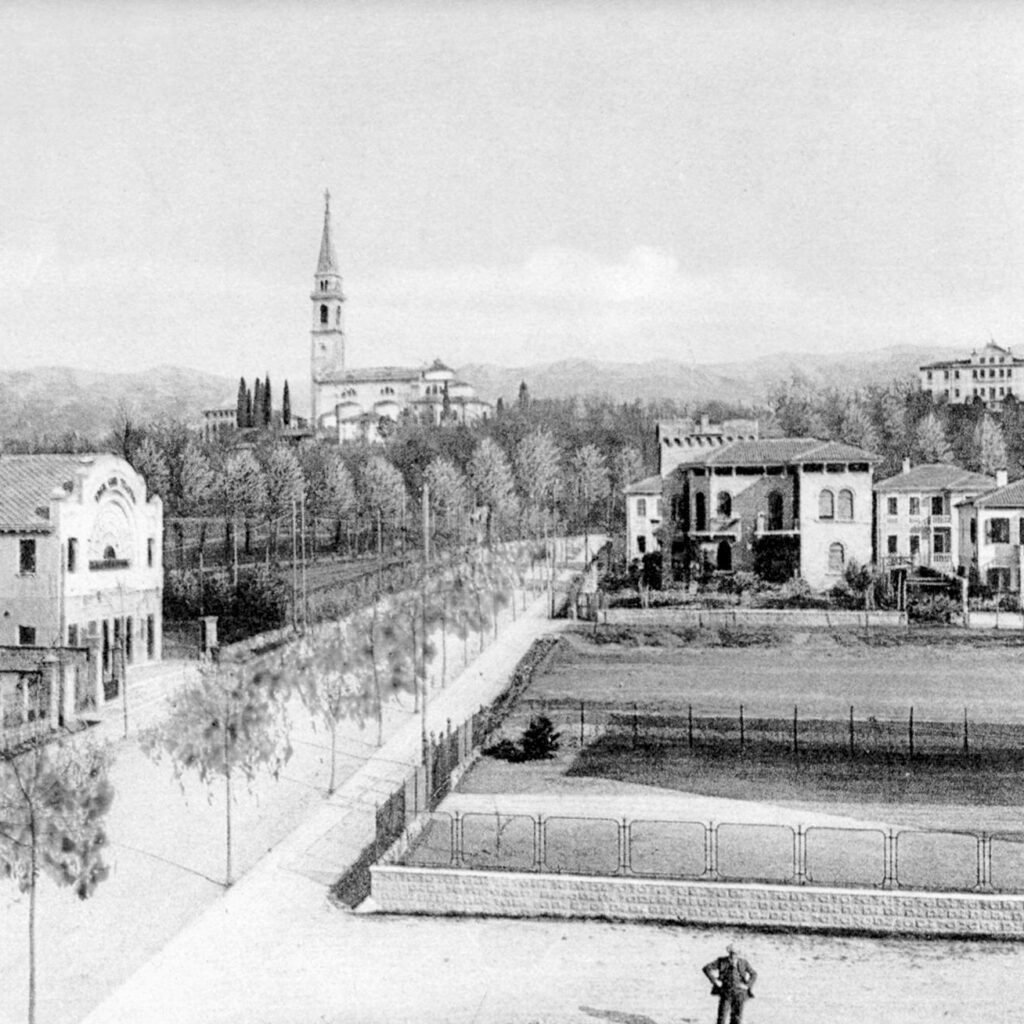

The villa has a singular appearance compared with the stylistic types in use at the time, yet the design was immediately accepted, without any condition, a detail that shows the high regard the surveyor enjoyed among local authorities. The building reflects the original project, except for the top of the turret: in place of the triforas and monofora originally planned, it now features a solid upper part, crowned by strong hanging arches that echo the corbels of towers.
Known as Casa De Campo, the house presents a historicist style with neo-medieval inspiration, enriched with touches of Art Nouveau; it is in fact a kind of “little castle,” as it is still often called, which stands out from the contemporary buildings in the area. On a base of rusticated stone rises a structure in exposed brick, from which the turret extends. The volumes are softened by refined architectural details: single-light windows framed by dentilled profiles, small terraces supported by elegant stone modillions, the overhanging roof alternating small windows with surfaces adorned with painted decorations. The elegance of the little villa is especially evident in the wrought iron railings of the balconies, decorated with plant-like motifs: craftsmanship suspended between art and artisan work, revived by the modernist, or floral, style that spread at the end of the 19th century.
Ascending the short staircase, one enters an open vestibule with two elegant wooden doors and decorative elements of zoomorphic and phytomorphic character once again in wrought iron.
Ascending the short staircase, one enters an open vestibule with two elegant wooden doors and decorative elements of zoomorphic and phytomorphic character once again in wrought iron. Looking up at the ceiling, one encounters rather intriguing and enigmatic decorative painting. A central roundel, containing a winged hourglass, is bordered by concentric bands; one of these bears the Dante quotation “VASSENE IL TEMPO E L’UOM NON SE N’AVVEDE”6 that is, time passes and man does not perceive it. A warning about the fleeting nature of time and the cycle of the day, echoed in part in the corner depictions where stylized animals are represented: a bat and an owl (nocturnal), and two birds traditionally linked with rebirth: the rooster and the swallow. If the rooster is a night-watcher, standing sentinel and heralding the return of the sun, the swallow is connected to the nest and home, becoming a symbol of familial love, and to spring, therefore renewal; a sense of freedom expressed through its ceaseless travels, and of hope for change: a positive message for the homeowner and guest alike, because the swallow suggests, in the face of time that passes, to face difficulties with courage and hope for the future.
⁶ Dante Alighieri, Divine Comedy, Canto IV of Purgatorio.
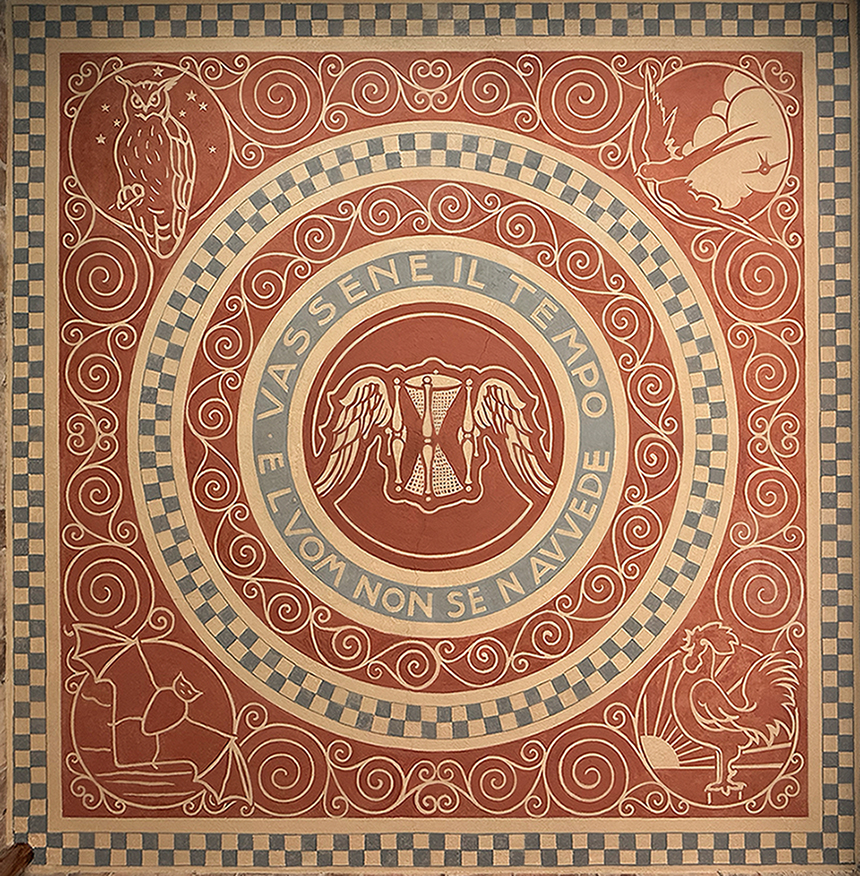
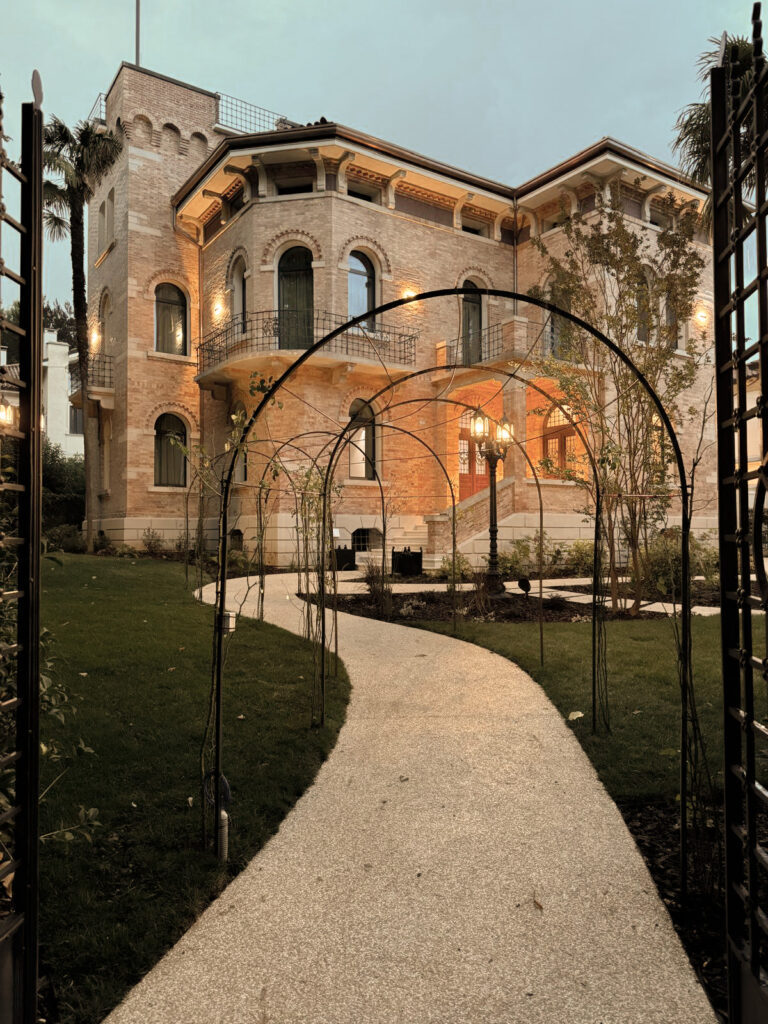
Apart from these few active years, little is known about the surveyor Da Campo. We know that his house passed into the possession of accountant Carlo Bernardi, a notable figure of the Banca Popolare of the town, who also served the municipality handling aid for thousands of refugees. It later became the residence of the Garbujo family, originally from Volpago del Montello, later relocating to Montebelluna. Left uninhabited for many years, it has recently undergone significant restoration aimed at preserving its historical and cultural integrity, restoring it to its original splendor.